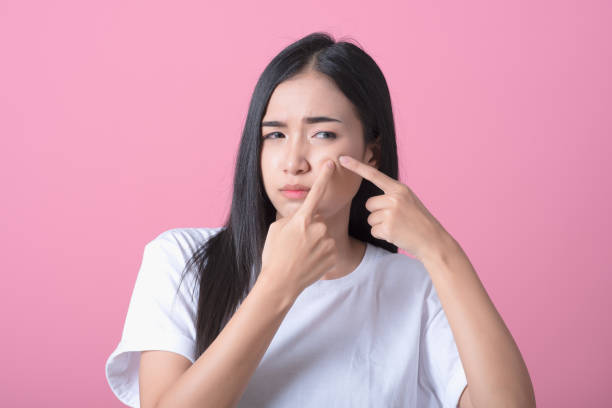Acne is a common skin condition that affects millions of people worldwide. While most individuals have experienced the occasional pimple or two, acne blemishes can be a persistent and frustrating issue for some. In this blog, we will delve into what acne blemishes are, explore the various types, and discuss effective treatment options.
What Are Acne Blemishes?
Acne blemishes, often simply referred to as “acne,” are a group of skin conditions that result from the clogging of hair follicles with oil, dead skin cells, and bacteria. They typically appear on the face, neck, chest, back, and shoulders but can occur anywhere on the body. Acne can affect people of all ages, but it is most common during adolescence due to hormonal changes. Isotretinoin 40 mg helps in treating acne.
Types of Acne Blemishes
-
Whiteheads: Whiteheads, also known as closed comedones, are small, flesh-colored or white bumps that form when a hair follicle becomes blocked by oil and dead skin cells. The follicle’s opening is closed, which prevents the trapped material from oxidizing and turning black.
-
Blackheads: Blackheads, or open comedones, are similar to whiteheads but have an open pore. This allows the trapped debris to oxidize and turn black, giving them their characteristic dark appearance.
-
Papules: Papules are small, red, tender bumps that form when the hair follicle walls become inflamed due to excess oil and bacteria. They are often painful to the touch.
-
Pustules: Pustules are similar to papules but contain pus at their tips, giving them a white or yellow center. They are typically red and swollen and may be filled with a yellowish fluid.
-
Nodules: Nodules are larger, solid, painful lumps that form deep within the skin. They result from the accumulation of oil, bacteria, and dead skin cells deep within hair follicles. Nodules can persist for weeks or months and often leave behind scars.
-
Cysts: Cysts are the most severe form of acne blemishes. They are large, painful, pus-filled lumps that can cause significant scarring. Cysts require medical attention and may leave permanent marks if not treated properly.
Causes of Acne Blemishes
Acne blemishes primarily result from the following factors:
-
Excess Sebum Production: Sebum, an oily substance produced by the sebaceous glands, can become overproduced due to hormonal changes or genetics. Excess sebum can clog hair follicles and lead to acne.
-
Dead Skin Cells: The constant shedding of dead skin cells can contribute to clogged pores when these cells mix with sebum.
-
Bacteria: The presence of Propionibacterium acnes (P. acnes) bacteria on the skin can contribute to acne development. These bacteria thrive in clogged hair follicles and trigger inflammation.
-
Hormonal Fluctuations: Hormonal changes, such as those during puberty, menstruation, pregnancy, and polycystic ovarian syndrome (PCOS), can lead to increased sebum production and acne breakouts.
-
Diet and Lifestyle: Certain dietary choices, stress, and lack of proper skincare can exacerbate acne.
Treatment of Acne Blemishes
The treatment of acne blemishes depends on the severity and type of acne. Here are some common approaches:
-
Topical Treatments: Over-the-counter or prescription topical treatments, such as benzoyl peroxide, salicylic acid, and retinoids, can help unclog pores and reduce inflammation.
-
Oral Medications: In severe cases, a healthcare provider may prescribe oral antibiotics, hormonal medications (e.g., birth control pills), or isotretinoin (buy accutane online) to target the underlying causes of acne.
-
Professional Procedures: Dermatologists can perform procedures like chemical peels, microdermabrasion, laser therapy, and drainage and extraction to treat acne and reduce scarring.
-
Lifestyle Changes: Adopting a healthy lifestyle, including a balanced diet, stress management, and proper skincare routines, can help prevent and manage acne.
-
Home Remedies: Some people find relief with natural remedies like tea tree oil, honey, and aloe vera. However, these should be used cautiously and may not work for everyone.
Conclusion
Acne blemishes can be a frustrating and sometimes painful skin condition, but effective treatments are available. Understanding the causes and types of acne is the first step towards managing and preventing breakouts. If you struggle with acne, it’s essential to consult a dermatologist for a personalized treatment plan that addresses your specific needs and concerns. With the right approach, clearer, healthier skin is within reach.


